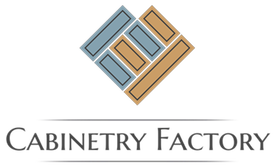|
The Covid-19 pandemic has wreaked havoc on global economy and thrown manufacturing businesses off-kilter. Some are even struggling to stay afloat while maintaining recommended precautions. At Cabinetry Factory, our commitment remains strong to the customers, and we want to share some best practices for maintaining your business during a time of social distancing.
Build Your Outreach Try to amp up your online networking with social media, promotions or anything else you believe will help your business stay top of mind with potential clients. Let your clients know that even during these tough times, you are still here for them. Some great ways to stay connected are hosting virtual events, and increasing communication by email and personal phone calls. If you have had an outreach or promotional idea in mind, revisit it and see if you can configure it to fit the current global situation. Remain Financially Prepared Try to identify areas where you can hold down costs and review any credit lines you may have. Another idea is to move money so you can access it quickly. A key to productivity and profitably during this crisis is to keep your employees feeling secure and informed. A great resource has been published called the COVID-19 Company Playbook by Ask Almanac. It provides answers to some of the most frequently asked questions by employees, which could be a helpful resource for communicating with your team. Check off Any Pending Tasks Do you have tasks on the backburner iny our mind that you’ve always wanted to work on but never had the time? Tasks like starting a blog on manufacturing, creating an online portfolio of cabinetry samples,etc.? Now is a great time to revisit those ideas. Not only will it keep your workforce moving forward, but when this pandemic is over, you will have checked items off your to-do list and even taken some great business steps forward. Collaborate with Other Companies There is power in unity and numbers. By partnering with other companies in the industry, you can support and recommend creative ways to help each other’s businesses and cover gaps in workflow as a result of this pandemic. Think of it as a way to help grow the pool of ideas to make it through these tumultuous times. Keep Your Team Safe We know there are situations where you and your team won’t be able to switch to working remotely, so it is important to provide an environment where precautions are being taken. Wearing masks, maintaining 6-foot distances, additional cleaning and disinfecting of workstations are just a few examples. The CDC has put together a great list of safe workplace practices for essential workers. Cabinetry Factory remains dedicated to growing and supporting our customers, especially during these difficult times, with our Quality, Competitive Price, Steady Lead Time. Understanding the difference in cabinet constructionWhat exactly does it mean for a framed cabinet or frameless cabinet? And what distinguishes one from the other? Exploring the unique differences between the two helps you determine which one is best suited to the needs of your kitchen or bathroom. What are framed cabinets?Framed kitchen cabinets have been a staple of American cabinetry for years, more traditional and they continue to be popular even today. That’s why they’re sometimes called “American style.” As the name suggests, framed kitchen cabinets have a face frame that covers the front of the cabinet box. The 1-½ inch face frame is comprised of rails and stiles and resembles a flat picture frame. The structure with a front face frame makes the framed kitchen cabinet more rigid and sturdy. The face frame also helps keep the cabinet square. The door is secured to the frame, adding dimension to the door front. Framed cabinets are appealing to many people because of their variety. We can mount the doors inside of the frame for an inset style, or expose part of the frame by mounting the doors to the front of the frame for a partial overlay or full overlay. Partial overlay is associated with less expensive cabinets because less wood is required to build doors and drawers when compared to full overlay where the doors and drawers cover the face frame almost completely.Framed kitchen cabinets with full overlay doors create an appearance that is very similar to frameless cabinetry. What are frameless cabinets?Frameless cabinets came to the US from Europe; they’re sometimes called European style. Frameless cabinets are frequently referred to as “full access” because no cabinet space is taken up by a face frame and they offer ease access to the interior of the cabinet. Only full overlay doors are used with frameless cabinets and the door are attached directly to the sides of the cabinet box. A veneered front edge is applied that hides the rough or raw plywood or furniture board edges.
Considered the modern alternative to the more traditional choice of framed cabinets, frameless cabinets offer a very sleek and streamlined appearance. Also, interior storage space is slightly larger within frameless cabinetry. Each kitchen cabinet construction method has its advantages and disadvantages; no one style is “the best.” Each has its merits. By Cabinetry FactoryLess is More with Minimalist Kitchen Design
The phrase “less is more” is not new, more homeowners adopt it as their mantra as trends shift towards minimalist kitchen design. Sleek kitchen cabinets, less molding, and less decorative hardware. Kitchens without upper kitchen cabinets are a great example of a minimalist approach. It is a practical alternative, and can be supplemented with open shelving to compromise on your storage needs without sacrificing the light and airy feel. Bathroom cabinets are no exception to the minimalist trend. Double floating vanities are a popular choice, coveted for their clean minimalist look with utilitarian practicality. They are an especially appealing addition for any bathroom because of the floor space they free up. Colorful Kitchen Cabinets With the growing popularity of the color blue, more people are opting for colorful kitchen cabinets. Homeowners are using color to tailor the design of their kitchen cabinets to suit their style. Color can add depth to the kitchen space, especially if space is short. Your choice of colors can help create the illusion of more space. Contrasting colors are particularly effective at adding depth, and don’t be afraid to go bold with a bright color. Blue is Trending Pantone announced in December that classic blue is their Color of the Year for 2020, describing it as a “timeless and enduring hue, elegant in its simplicity.” Pantone is a consulting service that predicts global color trends and advises companies on color in brand identity and products. Paint manufacturer Sherwin-Williams has also announced that naval is their Color of the Year for 2020, describing it as a “rich navy that creates a calm and grounding environment infused with quiet confidence.” Naval is a shade of blue that reminds people of the ocean and the skies. There is undeniably a blue trend in the 2020. One of the appeals of blue is the variety of shades, from softer shades for a clean and tranquil aesthetic to the striking color of darker blues. Cabinetry Factory can produce blue kitchen cabinet and bathroom vanities to customer's needs. Contrasting Kitchen Cabinet Colors While gray has long been a favorite kitchen cabinet color, in large part because of how it pairs with white and the way that it grounds the other elements, black has emerged as to challenge it. The pale color schemes of the farmhouse style are going more bold. In fact, expect to see more matte black around the house in a number of places, from bathroom vanities to kitchen cabinets. You can even achieve a matte black look with your kitchen countertops by choosing a honed granite material. The U.S. Department of Commerce has issued final duty determinations on Chinese imports of wooden cabinets and vanities - marking the end of a chapter in a nearly year-long ordeal.
The total antidumping and countervailing duties are as follows: Dalian Meisen 269.91%, Foremost 122.1%, Ancientree 13.33%, with all others 58.89%. This means that almost all Chinese manufacturers will now face a combined AD/CVD cash deposit rate of about 59%. "Today's final determinations by the Department of Commerce mark a historic day for the American cabinet and vanity industry," said Wellborn Cabinets director of product development Stephen Wellborn. Wellborn is also a member of the American Kitchen Cabinet Alliance (AKCA), the group who began its petition against unfairly-traded Chinese imports in March 2019. "We thank Secretary Ross and the team at the Commerce Department for their leadership in standing up for American jobs. China is not playing by the rules and today's announcement will help level the playing field for American kitchen cabinet workers." "The final determinations rendered by the Commerce Department are a major step forward for the American kitchen cabinet industry," said Mark Trexler, President and CEO at AKCA member Master WoodCraft. "Our fight is still not over, and we are hopeful for a positive outcome at the International Trade Commission in late March." In October, the Department of Commerce issued preliminary antidumping duties ranging from 4.49 percent to 262.18 percent, with most Chinese producers facing antidumping duties of 39.25 percent. These antidumping duties are in addition to earlier countervailing duties averaging 16 percent, which have been in effect since August 2019. As a result of this final decision, cash deposits will continue to be required on all wooden cabinets and vanities imported from China. On March 6, 2019, the AKCA initiated one of the largest trade cases ever filed against Chinese imports at the International Trade Commission and the Department of Commerce – a case which claims China's "manipulation and unfair trade practices" have resulted in a significant rise of the Chinese cabinetry imports - creating a threat to the estimated $9.6 billion American industry. The scope of the petition covers both face-frame and frameless cabinets, made of solid wood and composite panel construction, RTA cabinetry, cabinetry components including doors, drawers, back and end panels, as well as desks, shelves, and tables that are attached to or incorporated in the merchandise. The petition was fought every step of the way by the American Coalition of Cabinet Distributors, a group made up of U.S. distributors, dealers, contractors, installers and importers, which claims imposition of the proposed duties could significantly impact the RTA option from the U.S. marketplace. They say RTA companies serve a niche demand for RTA cabinets in the U.S. that prioritize limited selection and short lead times over customized products that take many weeks to complete. They also claimed some cabinetmakers were seeking to exploit U.S. trade law for their own financial gain. The AKCA targeted RTA importers on their tariff exclusion applications. The fight isn't totally over though. While Commerce determines amount of duties, the ITC will determine injury and severe threat to the industry in March. The war between importers of RTA wooden cabinets and American kitchen cabinet makers is easily visible on official tariff exclusion applications.
Companies hoping to get an exclusion must explain to the U.S. Trade Representative's office why they think they deserve one. There's also a spot for comments from the public and organizations, who can choose to support or oppose the application. The American Kitchen Cabinet Alliance (AKCA), which formed in March to file an antidumping petition against China, says the Chinese government's "manipulation and unfair trade practices" have led to a more than 75 percent rise in Chinese imports of kitchen and bath cabinetry since 2015, creating a threat to the $9.5 billion American industry. AKCA submitted comments on the applications of several importers of RTA cabinets. On CNC Cabinetry's application, the AKCA wrote: "RTA imports do not constitute a separate, niche market, but rather a part of the U.S. market, as they compete head-to-head with the cabinets and vanities produced by the domestic industry, regardless of whether they are assembled or in RTA form. Both assembled and RTA cabinets are comparable with regard to quality, lead times, and other purchasing factors." CNC Cabinetry countered: "AKCA argues RTA cabinets are 'interchangeable' with domestic made-to-order stock, semi-custom, and custom cabinets. However, as emphasized in CNC’s request, short lead times and efficient delivery methods set RTA cabinets apart from the made-to-order cabinets produced by domestic manufacturers. These characteristics allow RTA cabinets to appeal to a completely different set of customers than made-to-order domestic cabinets." Fabuwood – also applying for RTA exclusions – saw similar comments on its application. RTA importers formed their own group, the American Coalition of Cabinet Distributors (ACCD) to fight the trade action earlier this year. Rather than emphasizing price, these RTA distributors say they are providing a product not available from most U.S. producers – a ready-to-assemble cabinet that can be delivered in days instead of weeks. In October, the Department of Commerce announced an affirmative preliminary determination in the antidumping duty investigation of imports of wooden cabinets, vanities, and components from China, finding that exporters from China have dumped wooden cabinets in the United States at margins ranging from 4.49 to 262.18 percent. The AKCA commended the preliminary determination, which it says is an important continuation of the work to address unfairly traded Chinese imports of wooden cabinets and vanities. Preliminary duties range from 4.49% to 262.18%, with most Chinese producers facing antidumping duties of 39.25%. "This is a good next step in the process of leveling the playing field for American manufacturers, and we look forward to the final determinations," Perry Miller, president of Kountry Wood Products, said at the time. "Today's determination makes it possible to move forward and continue to fight for our workers and for American jobs. We are all grateful to the Department of Commerce for their continued work on this issue." In response to the DOC's preliminary decision, the ACCD had said: “It is important to understand that an affirmative finding does not in any way suggest that imports of RTA cabinets and vanities from China are causing injury to the made-to-order cabinet industry behind this petition. In fact, the U.S. cabinet industry overall is healthy and growing. “The distinct RTA cabinet market accounts for less than 10% of all U.S. cabinet sales. RTA cabinets fill a specific consumer need, providing a limited selection of options that are available to consumers in a matter of days – a dramatically faster turnaround time than made-to-order cabinet companies offer. The made-to-order cabinet industry does not offer this niche product, and there is no justification for trying to penalize a segment of the market that their U.S. production does not serve. Remember that RTA imports are already saddled with 25% duties due to the trade war with China, making additional AD/CVD duties nothing more than punitive." SAN JOSE, Calif. - Countervailing duties on plywood and softwood, tariffs on steel and aluminum are "having a profound impact on U.S. cabinetry manufacturers," says John Sherwin (left), a researcher with Freedonia Group.
After a 20.83 tariff was imposed on on Canadian softwood imports in November 2017 (including pine, spruce, and fir), softwood lumber prices jumped, and they have remained high since. Longer-term anticipated results include: • an estimated 7% increase in the cost of new home construction in the U.S. (according to the National Association of Home Builders) • surging profits for U.S. lumber producers. In May 2018, the Random Lengths Framing Lumber Index hit the highest level since its inception in 1995, rising 30% from the previous year. (It has since lowered but not to pre-peak levels.) Despite the price rise, supply was not impacted, and in a May 2018 survey, 31 percent of single-family homebuilders reported a framing lumber shortage. "These additional costs are leading prospective home buyers in the U.S. to either postpone construction, opt for a smaller home, or buy an existing home instead of building," Sherwin says. He will be presenting resuilts The issue is still in flux, as the United States continues to bargain with China on trade. In early December, President Donald Trump and Chinese President Xi Jinping agreed to 90-day halt of a tariff increase from 10 percent to 25 percent on $200 billion worth of Chinese exports. The deal postponed a March 1 deadline for a new round of tariffs that would have be levied on oak, beech, maple, ash, cherry, moldings, rods, particleboard, various types of plywood, doors, charcoal, corks, and stoppers, and wicker and bamboo baskets. Furniture items include bedding, mattresses, car seats, wood chairs, furniture designed for offices, kitchens, chandeliers, and lamps. However until it is resolved, the effects transcend housing construction alone, with remodelers and manufacturers of flooring, cabinets, and related building and construction products purchased by both professionals and DIYers worried about the longer-term effects. For example, consumers may not be as willing to finance lumber-intensive home renovations given the higher costs. Not only wood is affected - but raw materials for hardware as well, as steel and aluminum tariffs also carry significant implications for the U.S fasteners industry, which is an intensive user of foreign-made steel and aluminum. Because fastener companies primarily compete on the price of raw materials, US companies could lose share to foreign concerns as import costs for these metals continue to rise, or in some cases even go out of business. There are literally hundreds of cabinet producers and probably thousands when you include all the local and small-business cabinet makers. While there is skill and craftsmanship necessary to produce quality results, producing quality doesn't necessarily require highly complex machinery or factory conditions. In other words, you may find a talented carpenter or local cabinetmaker with the ability to produce fine cabinetry.
Given the number of cabinet producers, you're probably asking what the differences are, if any, among them all. In reality, the differences are really found in the same general categories that make them similar. It's back to the car analogy again: the auto manufacturers all make vehicles that do the same job; they're just variations on a theme. How They're Similar
How They're Different
So what's the bottom line when it comes down to sorting through all the various cabinet makers? There's no right or wrong way to narrow down to a short list of candidates but here are some suggestions:
So who are the best kitchen cabinet manufacturers? While it's a legitimate question, the answer isn't as definitive as you might think. And here's why: There are makers of cabinets almost too numerous to catalog, let alone do independent tests on to determine who's best. I'm sure Consumer Reports has their short list of brands that they rate as good/better/best. But how many do they test relative to what's available in the marketplace? Second, the determination of "best" is somewhat subjective. Sure, there are definite indicators of good quality and poor quality but there isn't one gold standard. One person may think that anything other than plywood construction is "poor" quality. However cabinets made with medium density fiberboard may be just as durable and last just as long. Let common sense prevail here. "Better" products are those made with stronger construction techniques and more durable finishes. But there aren't only 5 or 10 of these manufacturers out there. To some extent cabinets are a commodity. There are probably hundreds of producers that fall into the "best" category if you look across the spectrum of national and local manufacturers. Your most effective way to find the best brands are to look at what is available to you locally (both from a 'national' brand perspective as well as local producers) and see how they compare. Then, determine how they match up with your budget. What you should be shooting for is a kitchen cabinet manufacturer that can give you the most of what you're looking for (quality -- as you judge it, options, quantity, etc.) for what you're willing to pay. In my opinion, that's your "best" kitchen cabinet maker. Because at the end of the day, even if someone was able to say that Brands A, B & C are the best brands, they may not be the best fit for your budget. You need to take some responsibility for understanding what makes cabinets good/better/best and make an educated buying decision. I think that's a more rational approach than simply relying on an arbitrary list of "great" kitchen cabinet producers. Cabinetry Factory regularly tracks the latest cabinetry trends to ensure we have our finger on the pulse of the industry. White shaker style cabinets seem to be a staple the last few years, but check out what else is hot in cabinets:
Cabinet Color They say the kitchen is the heart of the home, and people want their heart to have some style. Traditional wood tones for cabinets are out, and mixed materials are in, especially among millennial homebuyers. Sherwin Williams recently released its Kitchen Cabinet color card, here's what the company had to say:
Technology It's no surprise that home remodeling is on the rise among millennials according to the 2017 Houzz & Home Survey. It only makes sense that kitchen and bath design professionals adapt their business practices to serve their younger audience through technology. One trend that will continue to grow and make an impact on the cabinet industry is augmented reality. With new apps like those being released by Apple, it is easier than ever for people to see how a specific piece of cabinetry will fit and look in their homes. This type of technology will continue to change the way cabinet companies interact with customers. According to recent research from Kitchen & Bath Design News and the Research Institute for Cooking & Kitchen Intelligence, technology enables clients to visualize the kitchen and bath projects they're considering and it also enables greater efficiency in business operations, saves time and allows for more effective communication with clients, suppliers and subcontractors. Survey respondents reported their most-utilized technology tools are smart phones (82.7%), company website (77.1%), laptop computers (68.7%), design software (67.3%) and social media (62.7%). Other commonly used digital tools include tablets, cloud-based storage, contact/email management software and business/design apps. According to the survey, technology tools are used most frequently in the following areas:
Cabinet hardware Kitchens today trend toward clean lines and more simple designs, and with fewer wall cabinets and more drawers, the call is increasing for hardware to be more functional. Hardware should minimize noise while making use of every square inch of space. Here are some of the hottest trends in hardware right now according to the Kitchen and Bath Design News:
Kitchen cabinet quality is essentially a function of the materials, construction methods, finish and craftsmanship used in the cabinet-making process. There's variability in all of these ingredients which results in a corresponding range of cabinet quality.
What Exactly Is 'Quality'? Before we get too far into the subject of cabinet quality, it will probably help to get a firmer understanding of just what that term means. "Quality" is something that's hard to pin down because at its root, it's subjective. One person's view of good quality may be another's interpretation of just "fair" or even "poor" quality. However, everyone of us still knows 'good quality', (whatever it means to us), when we see it. You've no doubt looked at a product of some sort that you felt either demonstrated good quality or it didn't. Being specific about what it was that brought you to that conclusion is a harder task however. In the end it was probably because it either "looked" a certain way (sturdy, good attention to detail, no flaws) or if you actually bought and used the product, it met or exceeded your expectations in some way. Maybe it lasted longer than you expected or performed it's job with no hiccups. Kitchen cabinet quality is no different. You'll encounter a range of materials and methods of assembly and in the end, you'll have to judge whether the product meets your quality standards. What we hope to point out here are the important characteristics that define kitchen cabinet quality and the variation within the quality spectrum. What To Look For In Kitchen Cabinet Quality To start with you might be asking "Aren't there any standards that define good quality?" The answer is yes, there are some standards established within the industry but they're not "rules" that must be complied with like airlines that must conform to FAA regulations. The KCMA, a cabinet industry trade organization, has established criteria that must be met in order to meet their certification requirements. However KCMA certification is elective and the lack of it doesn't imply poorer quality. At a minimum it gives you some baseline for the level of quality and durability a particular certified cabinet line has achieved or that other cabinet products can be compared to. Beyond that there's also some basic common-sense standards associated with cabinet quality that will help you discern between better and poorer kitchen cabinet quality. This gets back to the point about 'knowing quality when you see it'. For example, thicker materials will be sturdier than thinner materials or construction techniques like dovetail joints are more durable than glued butt joints. But despite those characteristics that are plain and obvious, there are others that you might not be aware of like cabinet box reinforcement variations and drawer slide ratings. So what should you be looking for to discern good cabinet quality? Focus on what the the basic components like the cabinet box, drawers and shelves are made from and how they're assembled. Also pay attention to the finish, how it's applied and the coatings that are used. So read on! Hopefully in the end you'll have a good understanding of the range of kitchen cabinet quality and which attributes are better than others. Cabinet Box Material And Construction In their most basic form cabinets are nothing more than boxes that are made in varying sizes and of different materials. However that's where the similarities end. How these boxes are held together and the materials they're made from vary among manufacturers and even among product lines at any given manufacturer. Materials When it comes down to the materials that make up the box, there's debate over which is best because it depends what "best" means to the individual. Consider the options: solid wood (for face frames), plywood, particle board and medium density fiberboard (MDF). Some cabinets also use a material called 'hardboard' for floors and cabinet back panels. The material cabinets are made from is important because it plays a key role in the durability, longevity and quality of service the cabinets provide. Material properties such as rigidity, screw holding power and susceptibility to moisture and humidity will vary based on the material used in the cabinet's construction.
Less preferable are smaller, thinner reinforcing pieces made from particle board and stapled or just glued in place. Some cabinet manufacturers make corner gussets from plastic. Thick, substantial plastic that is securely fastened to the side panels is preferable over flimsy plastic parts. Here again, your eye can usually spot the superior products over the inferior ones (keep asking yourself, "does it look/feel solid or flimsy?"). Larger corner gussets are more effective than smaller ones because they 'reach out' and support more of the cabinet walls that they're attached to. This does a more effective job in keeping the panels square and rigid, particularly as the size of the cabinet box gets bigger. Box Construction In a broad sense, better, more durable cabinet boxes possess:
Your cabinets end up holding a substantial amount of weight from stacked dishes to canned goods. The shelves that directly support that weight rely on the brackets attached to the sides of the cabinet box. Thinner panels might bow or twist, particularly if they're not reinforced in some way. The thickness of typical cabinet box side panels varies by manufacturer and product line. Thicknesses you'll see are 3/8, 1/2, 5/8 or 3/4 inch thick. Back panels range from 1/8 to 1/4 inch thick. Thicker panels provide more rigidity. For comparison purposes take a look at the relative thicknesses of these typical materials used in cabinet construction. As you can see there's a significant variation among them. The 1/8" hardboard on the left is used in some cabinets for the back panel. Typical cabinet box side panels are made from 1/2" stock with available upgrades to thicker material. Drawer And Drawer Slide Construction Cabinet drawers work hard because they hold a lot of the everyday items we use such as cooking and eating utensils. Because they're opened and closed frequently they take more of a beating than some of the other cabinet components. Better drawer construction means more durable and longer lasting drawers. Cabinet drawers aren't complicated and there's just a few points to focus on. Pay attention to how the drawer box is constructed and the kind of slides they're mounted on. Drawer Box Construction Joint Construction - methods of construction involve dovetailed joints, doweled or rabbet joints, glue and staples or a combination of these. Dovetailed joints are the most durable (provided they're tight with no gaps or looseness). Doweled and rabbet joints are next down the line with the glued/stapled joints at the lowest end of the quality spectrum. Box Material - drawer box materials (for wood-based cabinets) include solid wood, MDF, plywood or particle board or a combination of these materials. This is one location where solid wood is still fairly common in cabinet construction. Solid wood combined with good joinery results in the strongest drawer box. This is due to the inherent superior qualities of solid wood over particle board such as screw holding capability and resistance to moisture. (Despite your best efforts, someday you'll end up spilling some sort of liquid into an open drawer.) Bottom Thickness, Material and Retention - thicker bottom panels are better than thinner ones because the bottom panel supports the weight of the drawer contents. You'll see thicknesses ranging from 1/8 inch to 1/2 inch (keep in mind that 1/2 inch is 4-times thicker than 1/8 inch). Drawer bottoms that are dadoed into the 4 sides of the cabinet box represent good construction because it 'captures' the drawer bottom. Much less durable methods involve just stapling and/or gluing the bottom panel to the drawer box. Drawer Slides Slide Material - slides and their various parts are made from metal, plastic, nylon or a combination of these materials. Look at the rolling elements (the rollers or parts that actually allow the slide to move back and forth) and how the slide is attached to the back of the cabinet. Stronger more durable slides will use roller mechanisms that have steel ball bearings and have metal attachment fittings where they fasten to the cabinet box. Plastic and nylon attachments and rollers will be less durable than metal. Load Rating - the load rating defines the amount of weight the drawer slides can support, which includes the weight of the drawer itself. Typical cabinet drawer slides are rated at 75 to 100 lbs. capacity. The higher capacity slides will handle more weight. Wider drawers or large pull-outs like recycling centers may require slides with a higher load rating. Mounting Location - drawer slides are mounted on the sides (sidemount) or under the drawer (undermount). Sidemount slides result in a narrower drawer and less interior space for a given cabinet width compared to undermount slides because of the room the slides occupy on the side of the drawer. While this isn't necessarily a durability issue as it relates to quality, having more drawer space by using undermount slides is usually preferable over a smaller drawer. Higher-quality cabinet lines use undermount drawer slides over side-mount slides. Extension and Adjustability and Special Features - slides are classified by how far they allow the drawer to extend. They can be 3/4 extension, full extension and over-travel. Full extension and over-travel slides allow the drawer to be pulled all the way out (or past all the way for over-travel drawers) which affords access to the entire drawer all the way to the back. With 3/4 or "normal" extension a portion of the drawer remains inside the cabinet. You'll have to bend over to see or fish out the contents in the back. The lower the drawer is on the cabinet, the more inconvenient this gets. Adjustable drawer slides are another good feature to have. They allow the drawers to be realigned in height and side-to-side as needed should they go out of alignment over time due to wear or shifting. Better quality drawer slides also include added features such as soft-close action which causes the drawer to close itself once it's pushed past a certain point. Shelf Thickness, Retention And Adjustability Thickness And Material Despite their simplicity the shelves are another key component in your cabinets because they carry the major part of the load within the cabinet. Thickness and material choice are the important factors since they govern both the rigidity and strength of shelf. Plywood and solid wood are the best choices for shelf material as they provide better rigidity than MDF or particle board for a given thickness and shelf span. Obviously the thicker the shelf, the more rigid and less prone to sagging it will be. Also, shelves that have a reinforcing strip made from solid wood or plywood attached to the front edge or underneath are more rigid than shelves without this feature. How a load is place on a shelf will determine it's strength and resistance to sagging. In the case of kitchen cabinets the load is the 'stuff' you store on the shelves like dishes and food items. Don't underestimate the weight of some of these items - lift your entire stack of dinner plates sometime to get a feel for what your cabinet shelves experience. The weight of a stack of plates, bowls or canned goods can add up pretty quickly and the closer to the center of the shelf you store them the more strength that shelf will need. In general, shelf thicknesses range from 1/2 to 5/8 to 3/4 inch. The thicker 3/4 inch shelves are the preferable option based on their increased rigidity over thinner shelves. If you work with a custom manufacturer you should be able to specify whatever thickness you want. They should also be able to guide you on the best thickness for a given span length. Although most cabinet shelves top out at 3/4 inch thick, don't hesitate to go thicker on a custom cabinet if you need the extra support. Retention And Adjustability Adjustable shelves are obviously more versatile than fixed shelves. Good quality cabinets will have adjustable shelves or at least more of them than fixed shelves. For adjustable shelves make sure you're satisfied with the clips that hold up the shelf. Metal clips are sturdier than plastic clips. Shelves need to be strong but so does the hardware that holds them up. Look for metal supports rather than plastic. Also, look for supports that appear "right-sized" for the shelf span. There's no hard and fast rule here but brackets with a longer "reach" under the shelf are better than small ones, provided they're made from a solid material appropriate for their size. Note the small size of these shelf-holding pins in the picture on the right. Wider shelves and heavier loads might tax brackets of this size. The way the brackets are held into the cabinet sides is also important. Long shelves that support more weight put a heavier load on the brackets. Brackets that are just pins inserted into a hole in the cabinet sides aren't as durable as shelf standards. Shelf standards are metal channels that are attached to the inside walls of the cabinet box that accept metal clips to support the shelves. In some designs they're recessed inside a dado cut into the cabinet wall. They may be a bit more obtrusive looking but they offer a sturdier alternative than small pins pressed into a hole in the side panels of the cabinet. Cabinet Finish A good quality finish not only makes your wood cabinets look nice but it also goes a long way in protecting your investment. Why is that? Well, consider the environment your cabinets operate in. Have you ever had boiling pasta or lobster on the stove? Or maybe you have a stove-top grill. There's lots of moisture, greases, and temperature changes that occur in a hard-working kitchen. That's not to mention the many times the drawers and cabinet doors are opened and closed or leaned on with dirty or greasy hands. Then there's the occasional spill of vinegar or ketchup down the front of the cabinet door. A good quality cabinet finish will go a long way in making sure your cabinets aren't phased by this onslaught. Elements Of A Quality Finish Look for the following components in a quality cabinet finish: Catalyzed varnish or lacquer - a catalyzed varnish or lacquer has properties that enhance the durability of the coating beyond non-catalyzed varnish/lacquer. These qualities allow it to weather the harsher environment that kitchen cabinets are subjected to. Non-catalyzed coatings aren't as durable and will be more susceptible to damage. Note: you may see references to 'conversion' varnish or catalyzed conversion varnish. This is also a durable coating material. High-solids content - a finish, usually a varnish, with a high solids content provides more protection for the underlying wood and stain. "High solids" means that there's actually more solid 'particles' within the coating system. Those solids help to build up the coating thickness which ultimately provides a durable shield over the material underneath. UV protection - finishes and coatings that include constituents that resist fading from ultraviolet light are desirable over those that don't. Cabinets in a sunny kitchen will be exposed to fading from the UV light present in the sunlight. Regardless of who you buy your cabinets from make sure you understand what they're finishing process entails. Good wood finishing, particularly when using coatings like a catalyzed varnish, requires knowledge, tools and the right conditions to achieve a quality result. Think that all kitchen drawers are made alike? Well think again! Dovetail drawers offer many benefits that regular drawers just can’t match, continue reading to find out just what these benefits are!
Dovetail drawers require a different type of construction than standard kitchen cabinet drawers, and are usually regarded as a higher quality drawer option for homeowners. The difference between dovetail drawers and other, more traditionally constructed drawers, lies within the type of joint used in dovetail drawers. The type of joint constructed for dovetail drawers is known as a ‘locking joint’. The dovetail ‘locking joint’ is constructed from wedge-shaped channels cut into the wood, that interlock with one another from either side of the drawer, creating a box. The wedge-shaped pieces are called ‘tails’ and ‘pins’, and provide a very strong joint that is quite resistant to force once the two sides are assembled. The dovetail joint is so strong that oftentimes when a drawer breaks, it is not at the point of the joint. Not only is the ‘locking joint’ itself strong, but the joint’s surface is large enough to offer an unusually large area for gluing. Glue is stronger than wood, and therefore the more space that is available for gluing allows for an even stronger drawer box. Due to the construction of the joint, dovetail drawers also offer the largest storage space. British dovetail drawers, which are the type we have been talking about, allow for the largest possible drawer, regardless of the type of furniture. French dovetail drawers are a proper choice for specialty furniture, like pieces with curved fronts. Joints on French dovetail drawers are constructed slightly different, with the drawer side sliding upward into a long groove at the drawer’s front. The advantages of dovetail drawers are in the construction of their joints. They offer a stronger drawer, with a larger holding capacity. While these drawers are associated with a higher quality drawer, this is not always the case. There are many options for drawer construction, and picking the correct drawers for your kitchen cabinets should include strength and storage. |
Kitchen Cabinets Factory in Vietnam
Archives
May 2024
Categories
All
|
Copyright© Cabinetry Factory All Rights Reserved
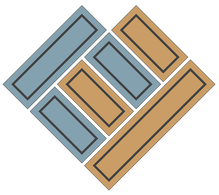


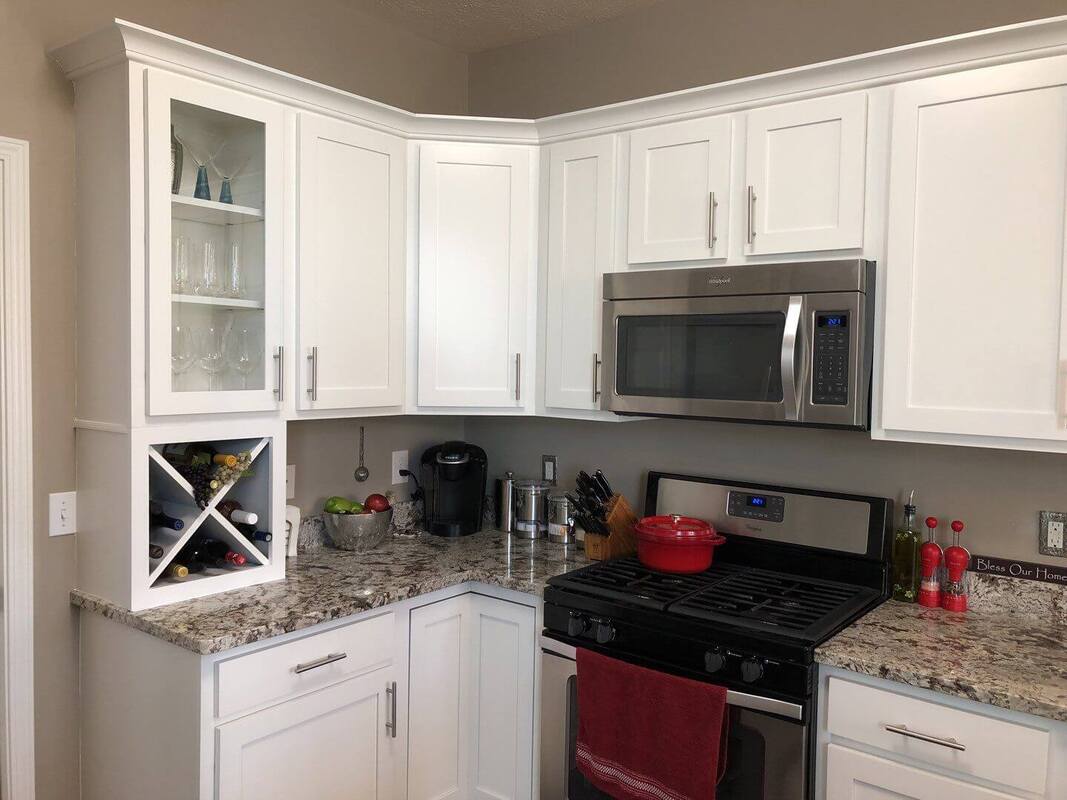
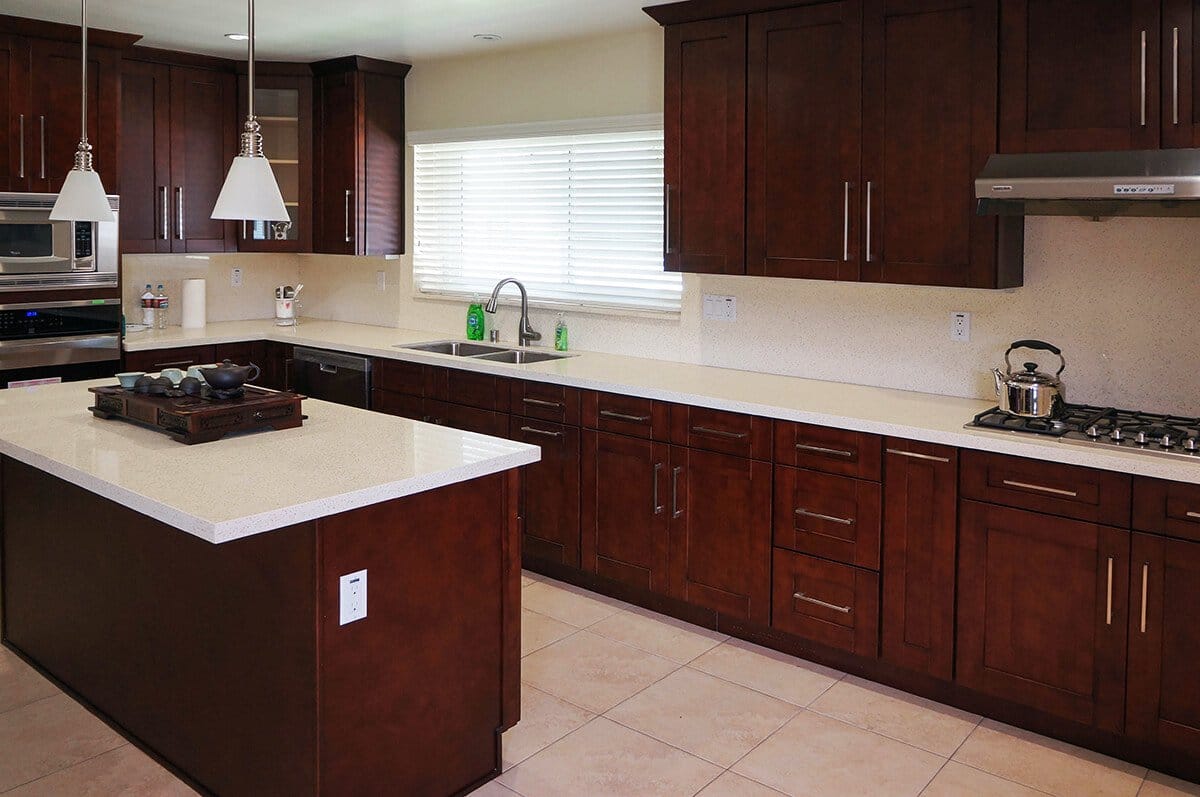
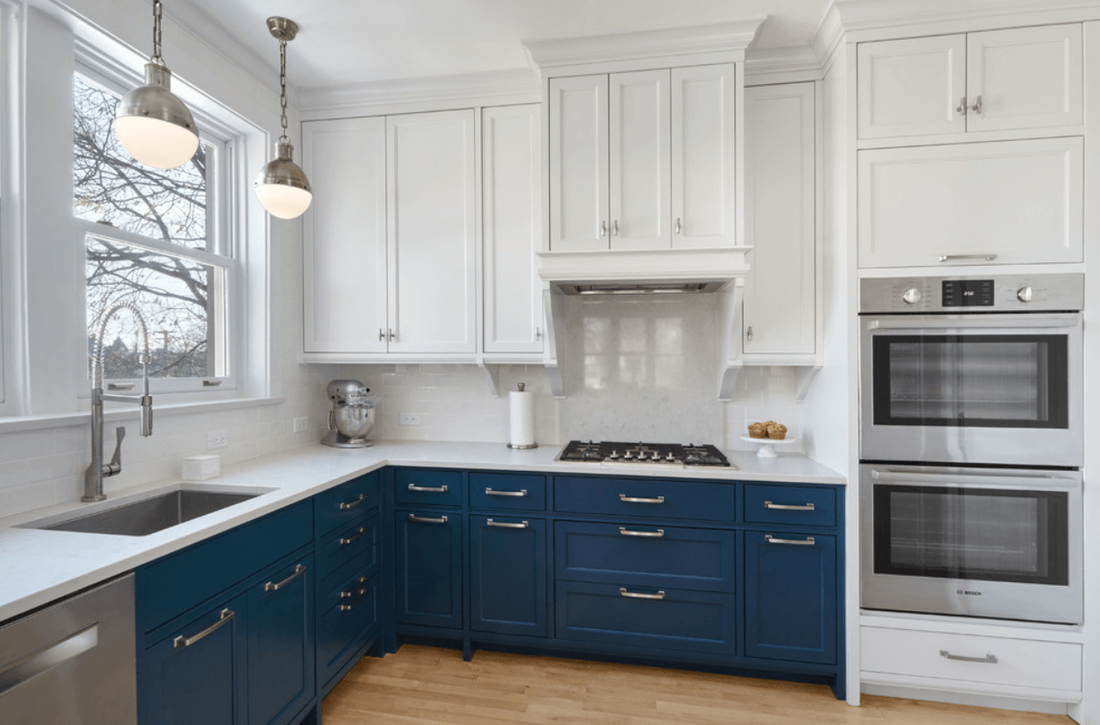
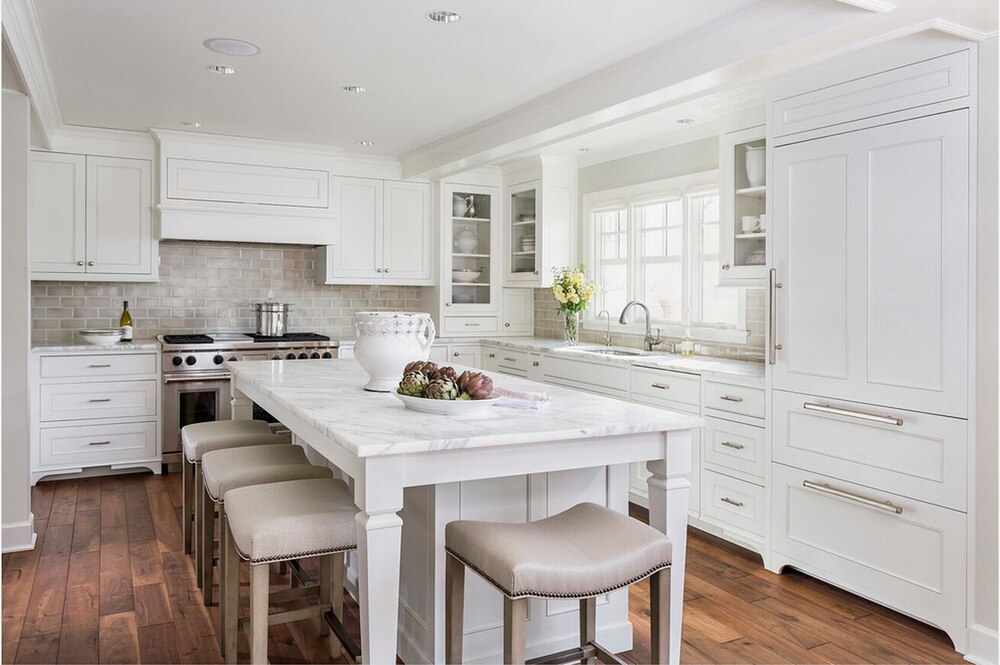

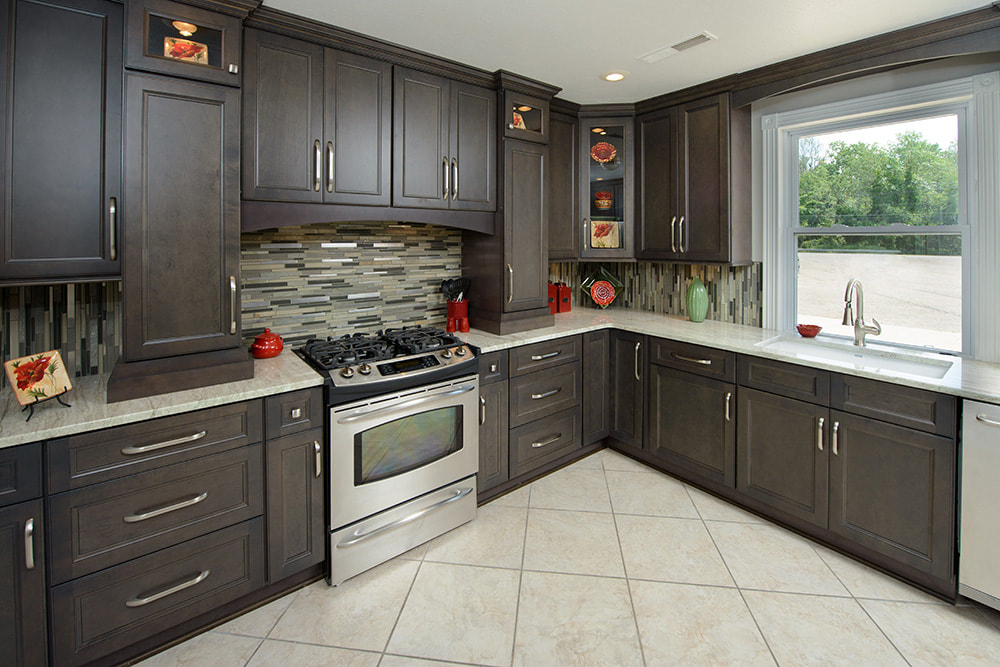
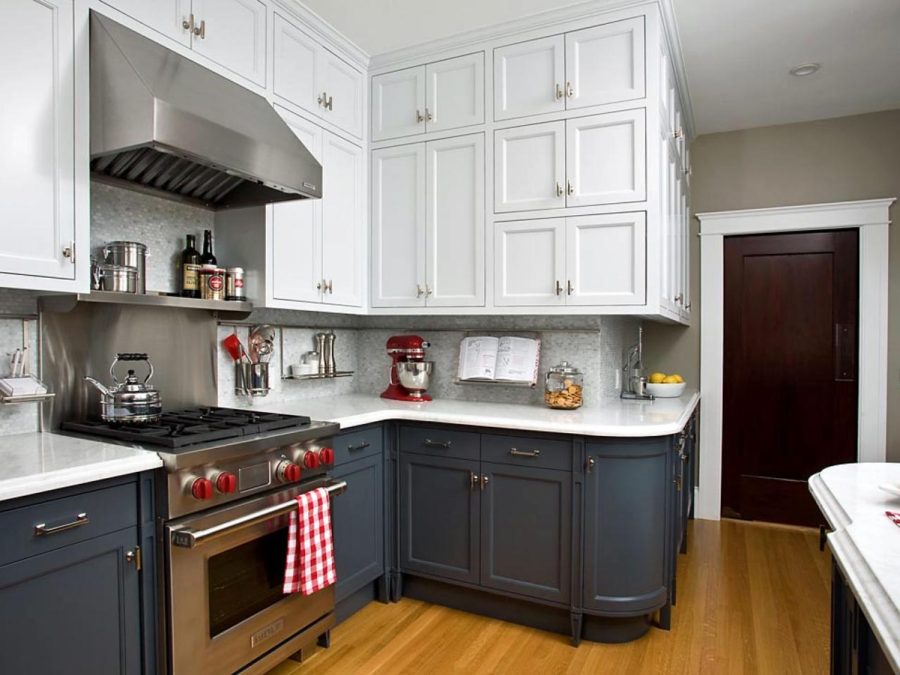
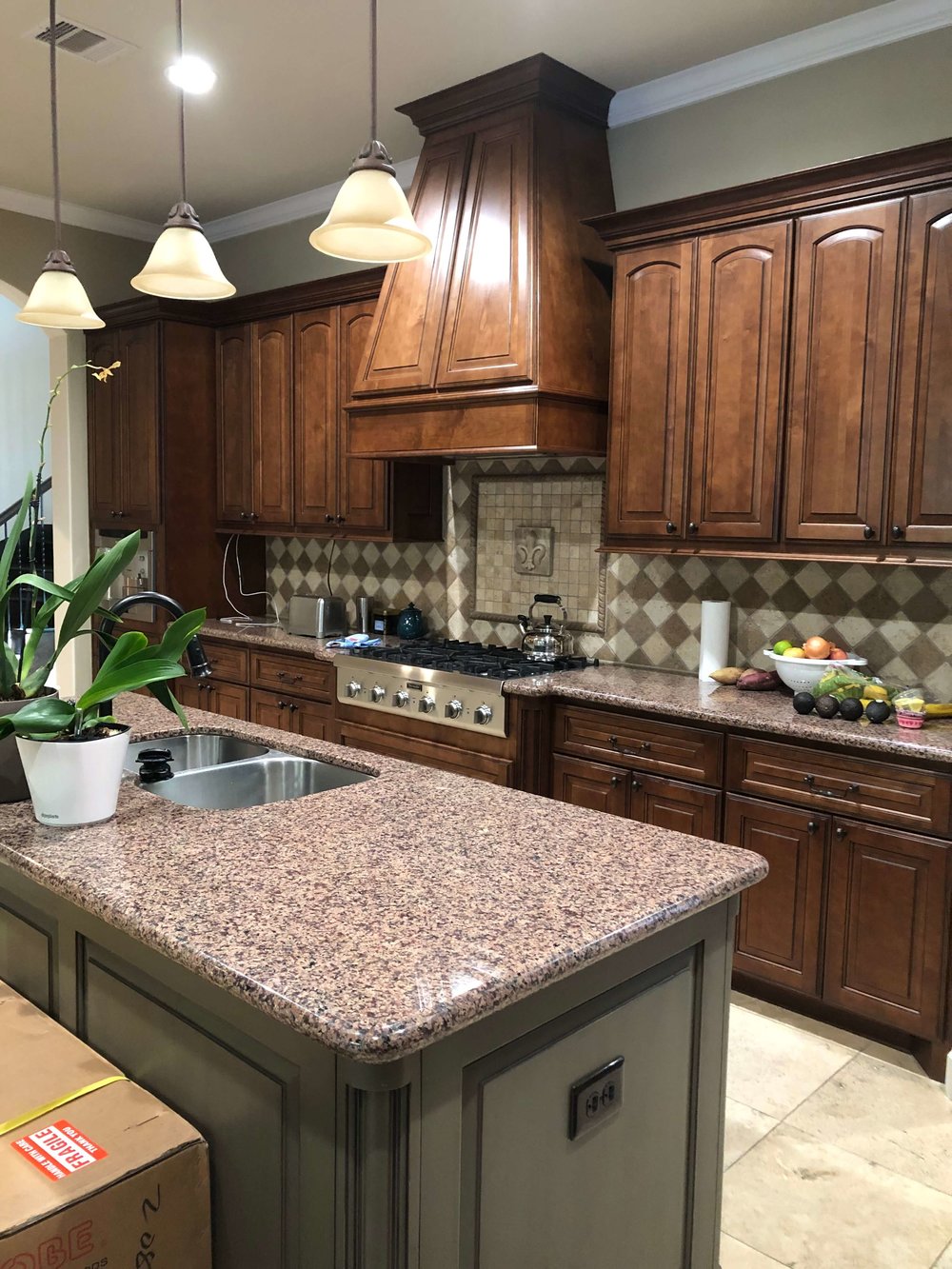
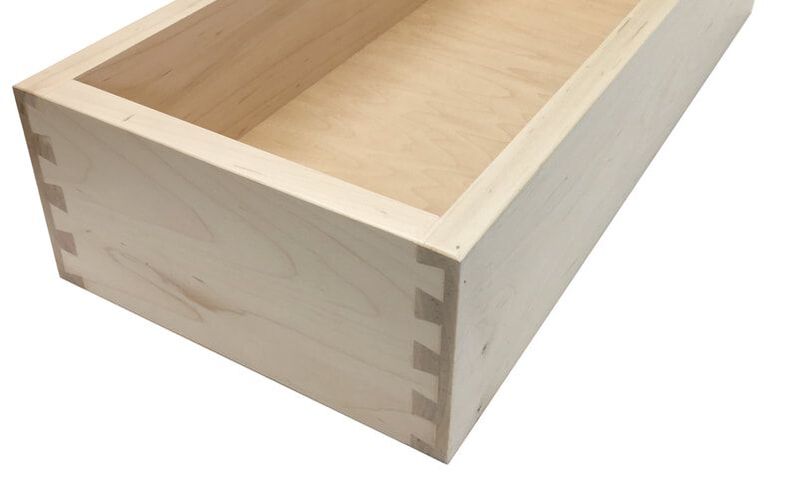
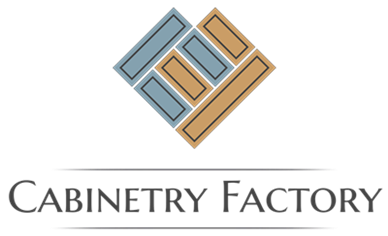

 RSS Feed
RSS Feed
